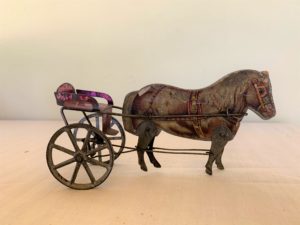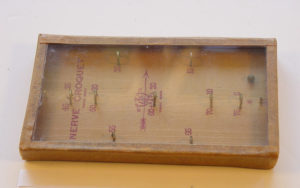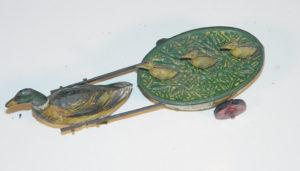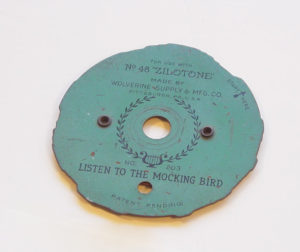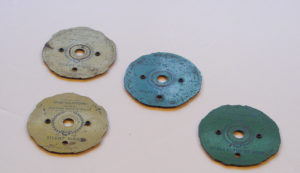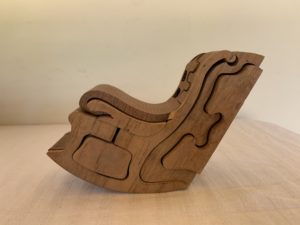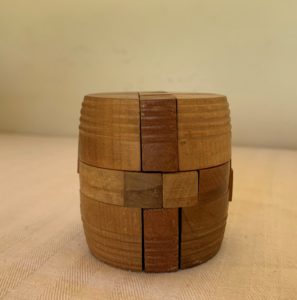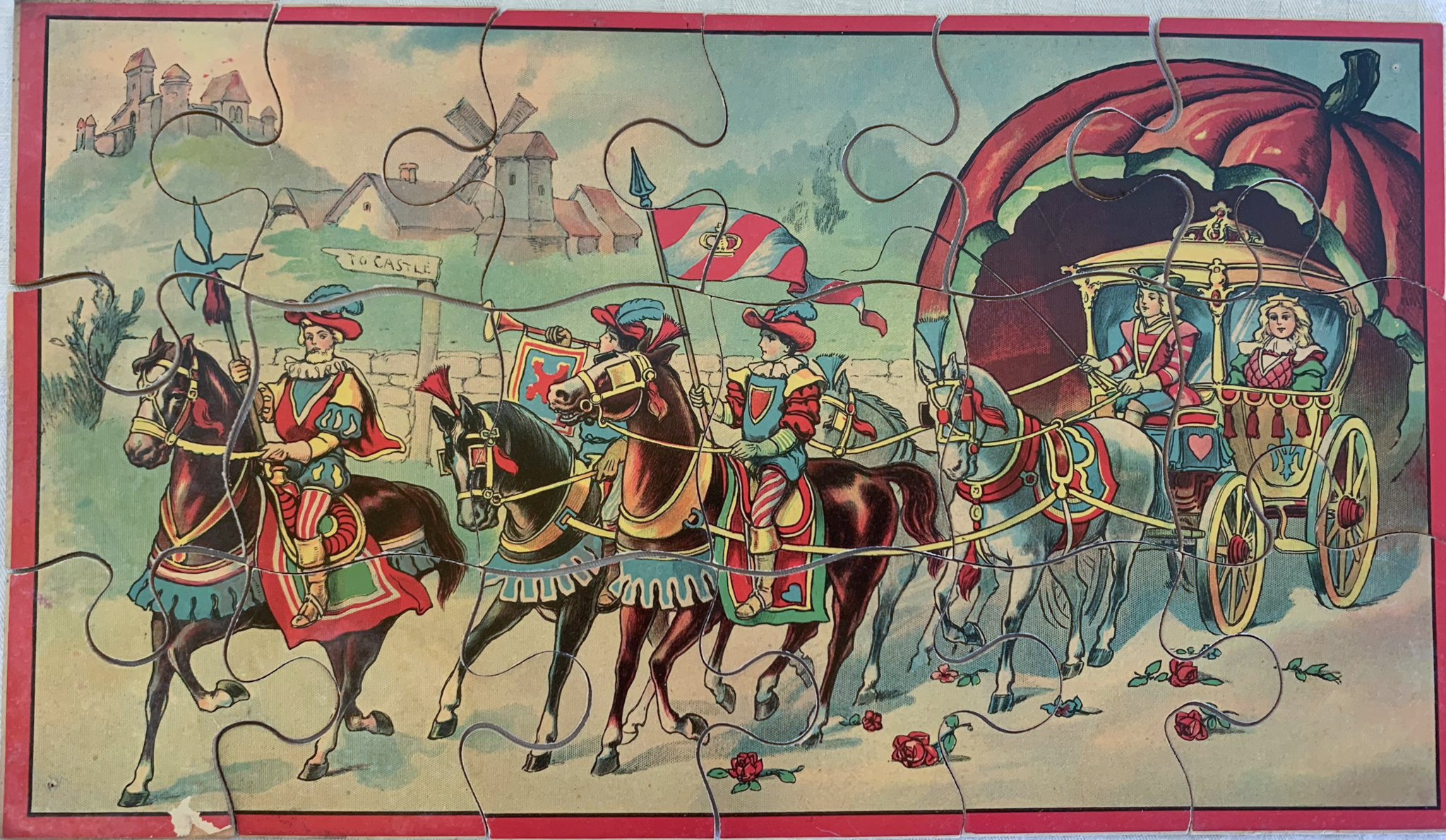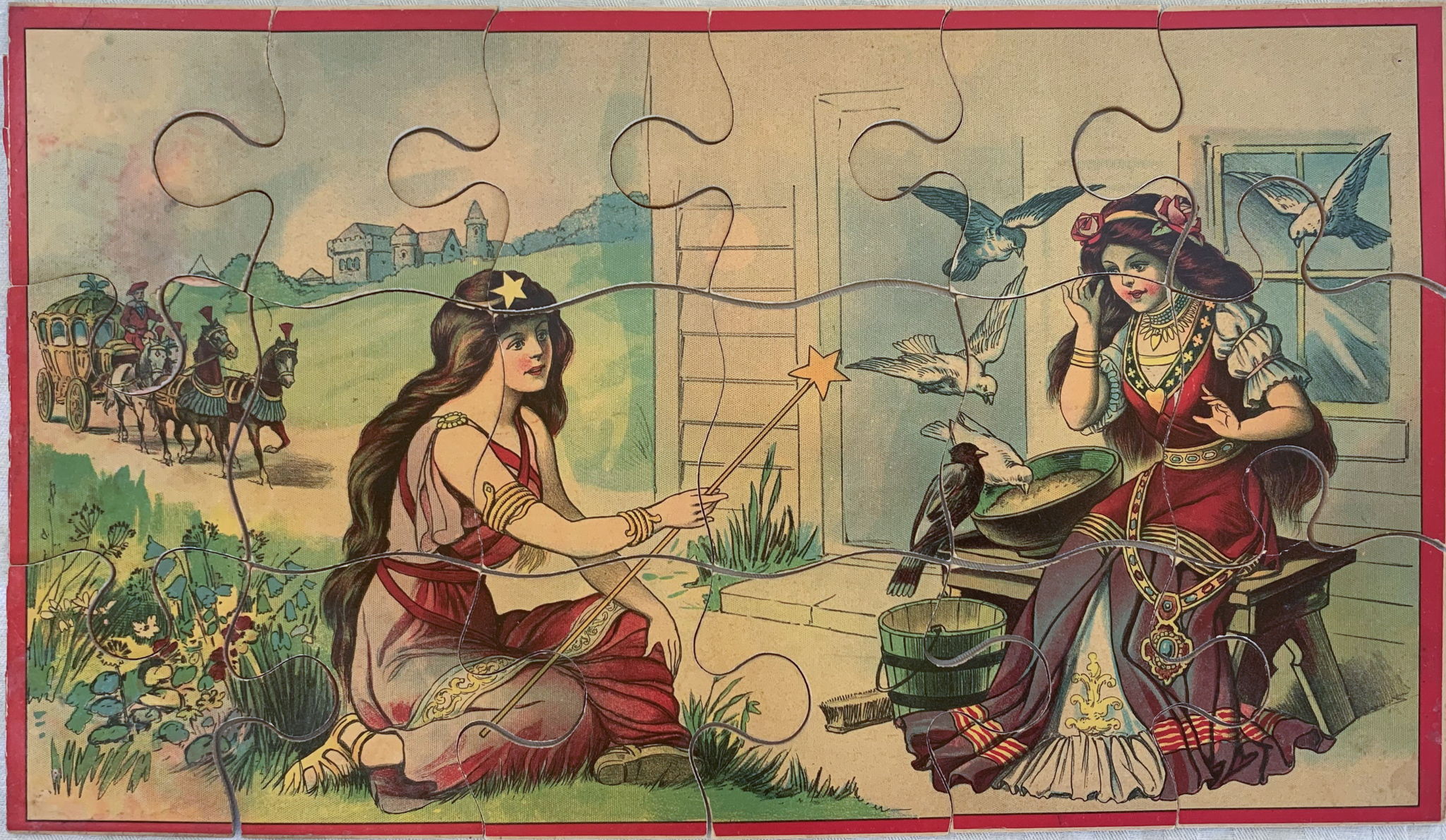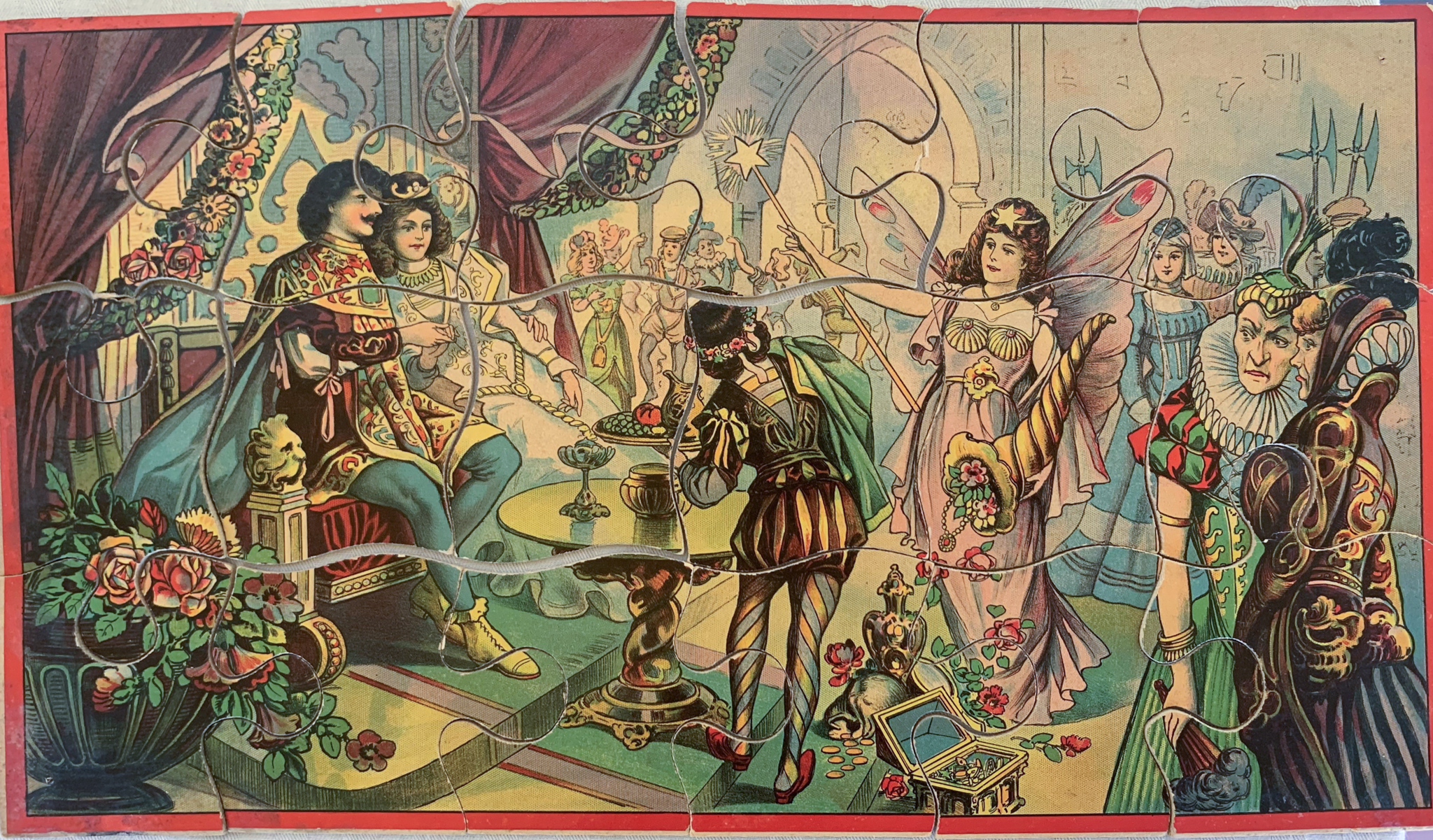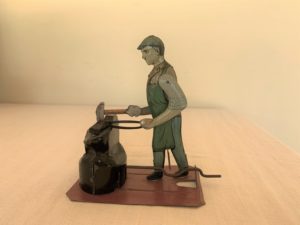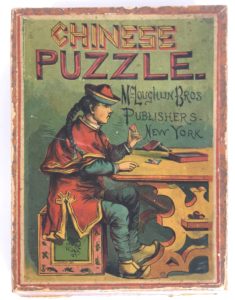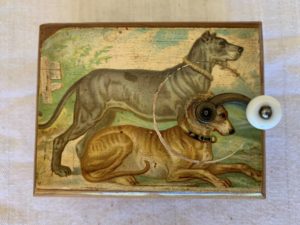Toys and Games of The Industrial Revolution
Entertainment and leisure activities have always been a part of life and Rancho Los Cerritos, as reflected by the diverse range of toys and games in the RLC collection. During the Victorian age a wider selection of toys and games became available to the general public because of improved transportation systems including the railroad. This period also saw improvements in manufacturing, as the Industrial Revolution was in full swing, resulting in more mechanized toys. Toys could now be mass-produced in factories, a shift away from the hand-made toys and games of the early nineteenth century.
Parlor games played indoors were popular pastimes for adults of the Victorian age. Such activities trickled down to children who enjoyed indoor games such as cards, dominos, and puzzles. Games played outdoors were also in fashion; for children they might have included croquet, horseshoes, or marbles. Many of the toys and games of the RLC collection also reflect an interest in education and learning, which was a trend in the toys and games of the Victorian period.
Please click on the images to view details of the artifacts
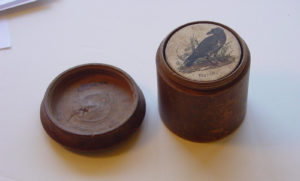 Alphabet game in a cylindrical wooden box with screw-top lid houses a set of 2” cardboard discs with bold letters on one side and animals on the other. Reminiscent of both “Pogs”, a popular playground game of the 1990s, and “Memory”, showing this game could be interesting to children (and perhaps adults) of any era. Donated by Dr. Ward G. DeWitt.
Alphabet game in a cylindrical wooden box with screw-top lid houses a set of 2” cardboard discs with bold letters on one side and animals on the other. Reminiscent of both “Pogs”, a popular playground game of the 1990s, and “Memory”, showing this game could be interesting to children (and perhaps adults) of any era. Donated by Dr. Ward G. DeWitt.
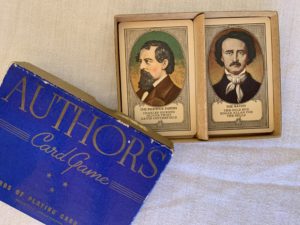
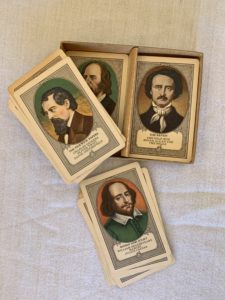 Set of forty-five playing cards featuring the faces of eleven famous authors including William Shakespeare, Charles Dickens, and Edgar Allan Poe. Card games such as Old Maid and Donkey were favored by Victorian era children, while Poker and Cribbage would have appealed the adult card players. Manufactured by Whitman Publishing Co, U.S.A., 1900.
Set of forty-five playing cards featuring the faces of eleven famous authors including William Shakespeare, Charles Dickens, and Edgar Allan Poe. Card games such as Old Maid and Donkey were favored by Victorian era children, while Poker and Cribbage would have appealed the adult card players. Manufactured by Whitman Publishing Co, U.S.A., 1900.
Donated by Lois H. Nissen.
Game titled “Nerve Croquet” with metal ball encased in a wooden box with glass cover. The object of this game is to nimbly guide the ball through the metal “wickets”, each given a points value. Similar plastic versions are available today, a testament to the game’s continued popularity.
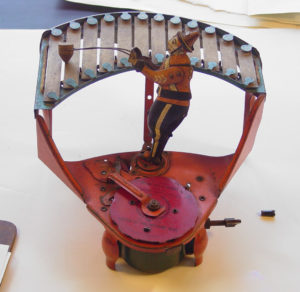 The Zilotone is a wind-up toy phonograph and xylophone combination with a tin clown that strikes metal keys to produce notes/sounds. Notes are determined by a metal disk inserted in the mechanism. This particular Zilotone was manufactured by Wolverine Supply & Mfg. Co., Pittsburgh, Pennsylvania and dates between 1918 and 1935, making it a newer toy than most in the RLC collection.
The Zilotone is a wind-up toy phonograph and xylophone combination with a tin clown that strikes metal keys to produce notes/sounds. Notes are determined by a metal disk inserted in the mechanism. This particular Zilotone was manufactured by Wolverine Supply & Mfg. Co., Pittsburgh, Pennsylvania and dates between 1918 and 1935, making it a newer toy than most in the RLC collection.
Set of three heavy paper jigsaw puzzles, which tell the story of Cinderella through small, highly-detailed vignettes.
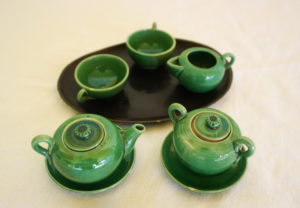 Children’s toy tea service set made of green China in the “Dotty Dimple” pattern. Set consists of two cups, two saucers, creamer, sugar bowl & teapot with lids, and oval black lacquer tray. This tea service was adopted by the local chapter of the Daughters of the American Revolution, and underwent slight restorations.
Children’s toy tea service set made of green China in the “Dotty Dimple” pattern. Set consists of two cups, two saucers, creamer, sugar bowl & teapot with lids, and oval black lacquer tray. This tea service was adopted by the local chapter of the Daughters of the American Revolution, and underwent slight restorations.

